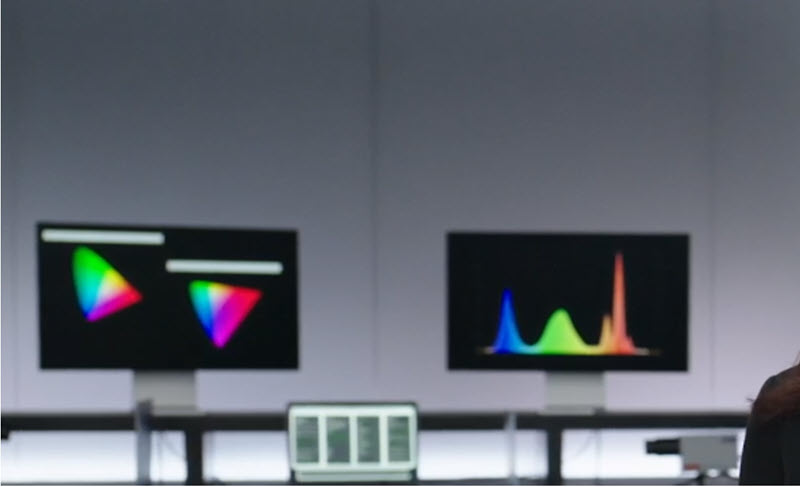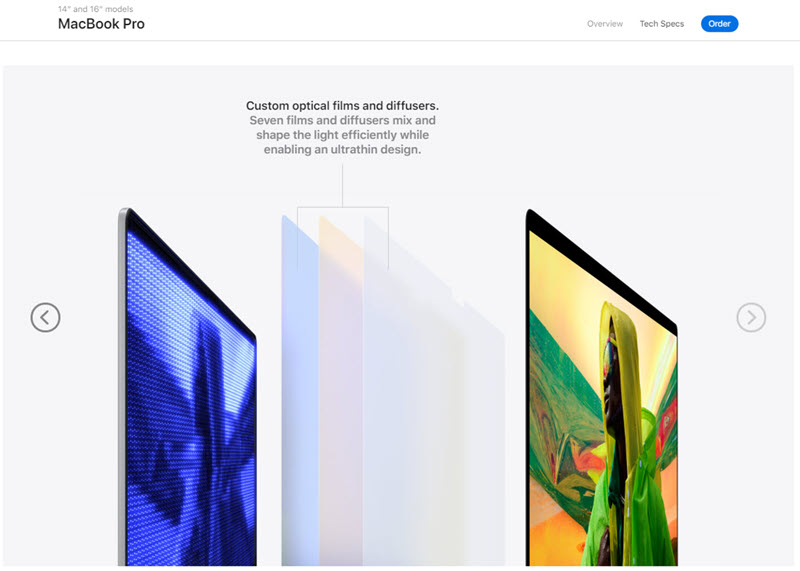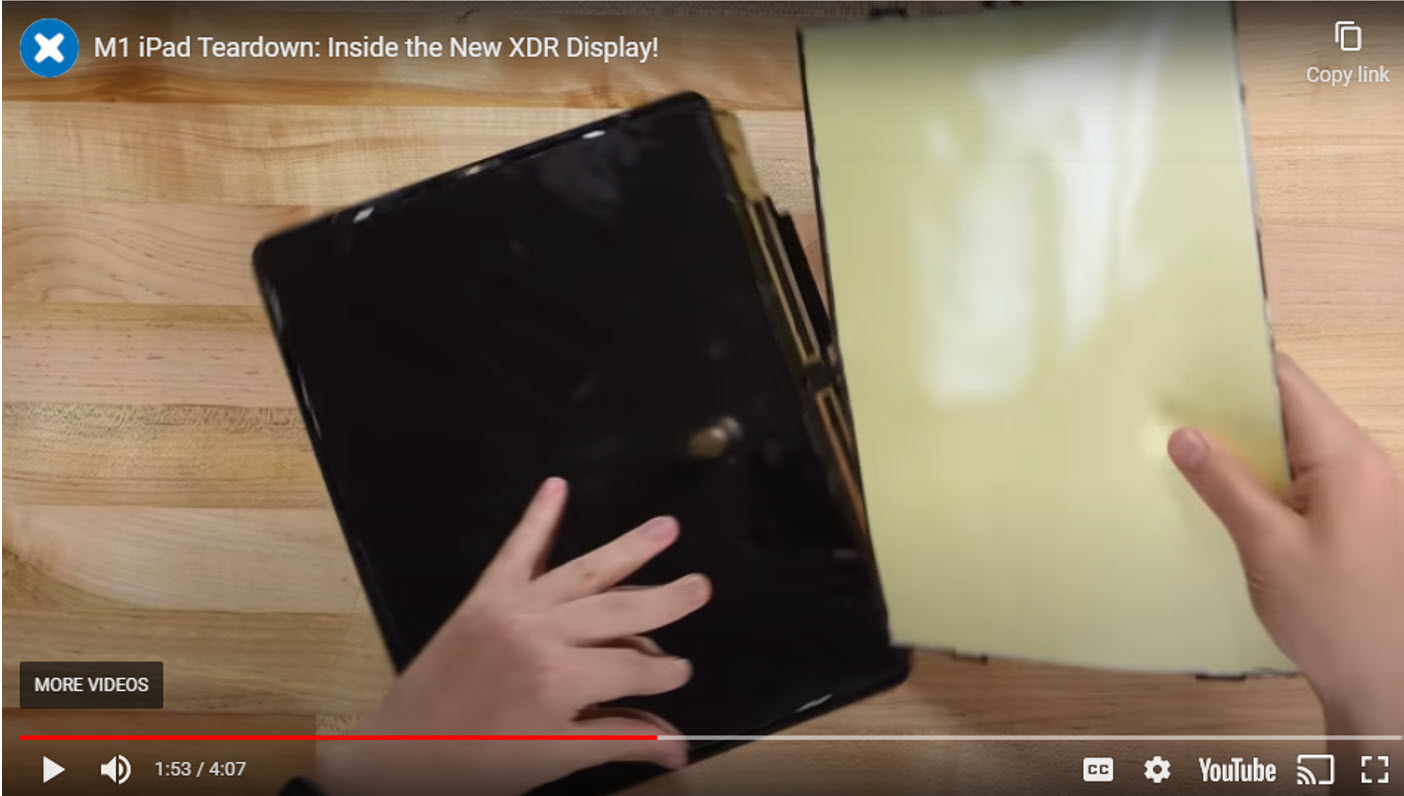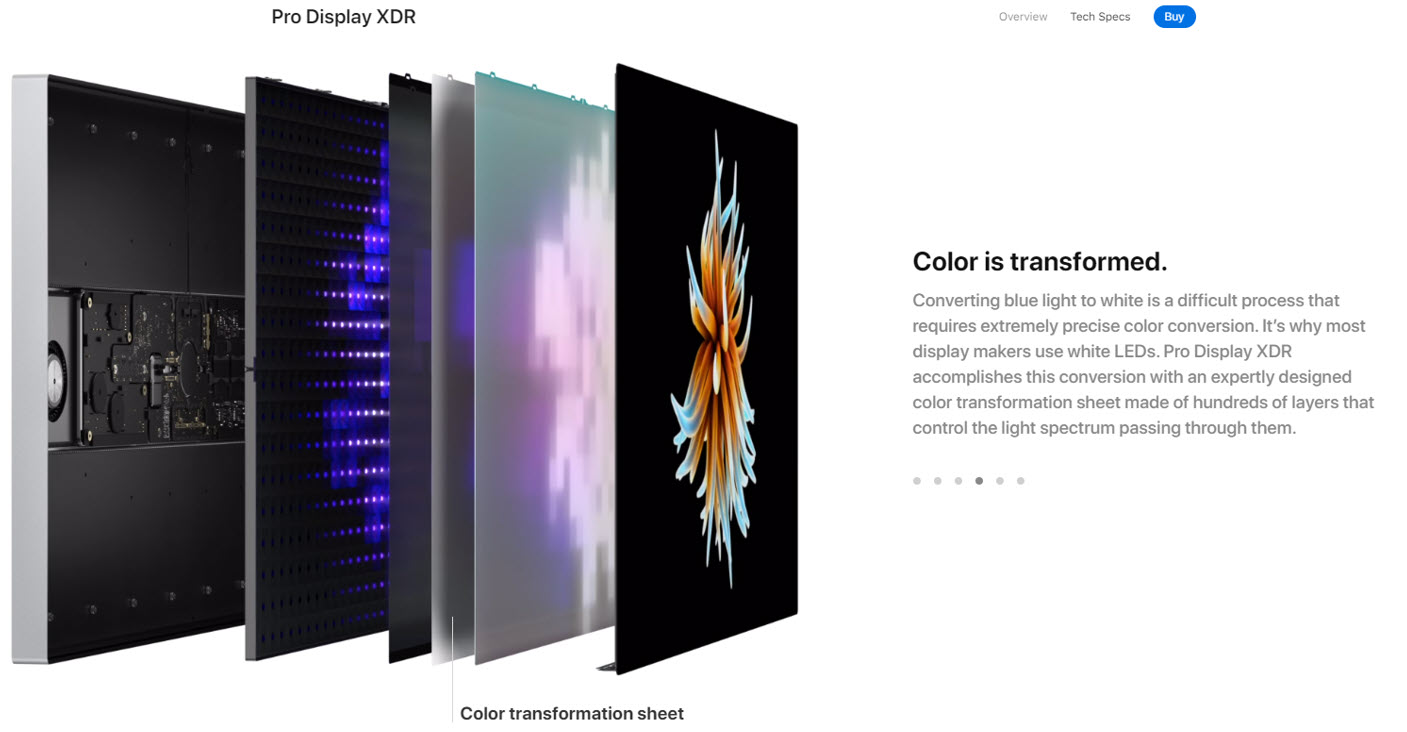With miniLEDs now squarely in the passing lane as the next big display revolution, it’s important to consider how these miniLEDs are currently being implemented in LCD technology. More specifically, how they are creating color.

In case you missed it, Apple has been promoting the mini-LED technology in their new ipad and Macbook Pro which they call “Liquid Retina XDR.” In a video released a few weeks ago they slipped an interesting spectrum in the background while promoting the display on the new Macbook Pro.
Do you notice something unique about the computer monitors behind the presenter? The monitor on the left is showing color gamut diagrams (pretty normal for us display geeks), and on the right is an optical spectrum. What caught my eye is the unmistakable red signal that contains multiple sharp peaks – a unique optical signature of the red phosphor KSF.
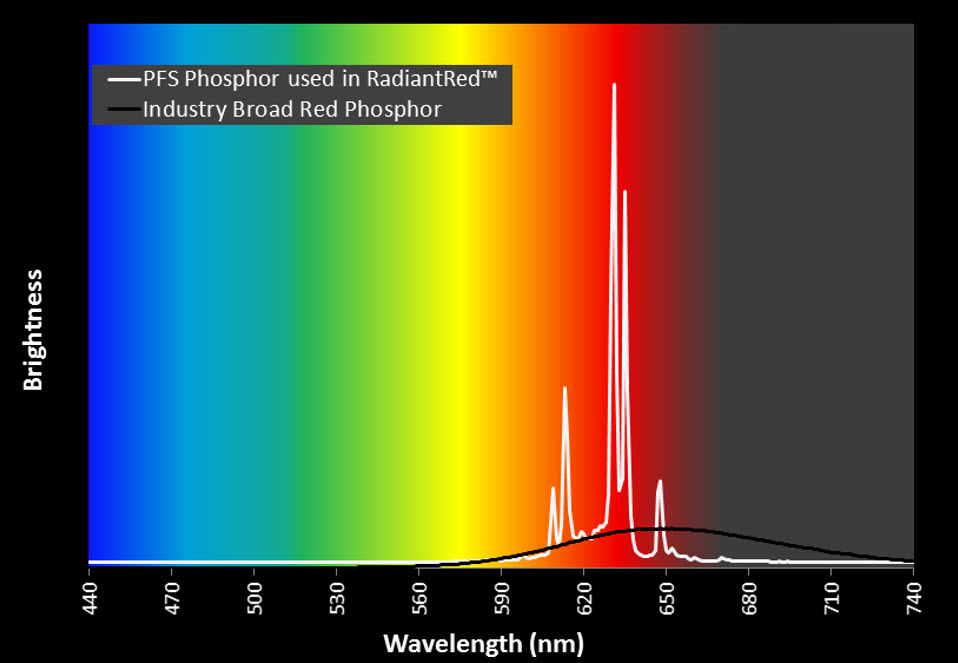 Optical spectrum of the red phosphor KSF or PFS. Source: https://www.geradiantred.com/
Optical spectrum of the red phosphor KSF or PFS. Source: https://www.geradiantred.com/
In the same video they shared a breakdown of the optical film stack in the back light unit. Not a lot of details other than confirming that the miniLEDs used are blue LEDs. So the red and green light must be generated after the miniLEDs in the optical stack in their “custom optical films and diffusers.”
ifixit did an interesting teardown on the ipadPro, which also uses a similar (same?) microLED architecture. Notice the yellow-colored film in the screen shot below. To me this looks a lot like the color one would expect to see for a film that is used to convert blue light to red and green.
They also did a rice-grain comparison which I though was pretty neat to drive home the size of these miniLEDs. They are SO SMALL!
So it seems apple has chosen to avoid using LEDs with phosphors, and rather have chosen to implement a color converting film instead. But what exactly is in that film?
The evidence so far is quite convincing that Apple is using a film containing KSF in both the ipad and MacBook Pro, but I needed to be sure, so I went on a quest to find out.
Enter sleuthing mode…
I took my mini spectrometer from Avantes (AvaSpec mini) to the store to begin my investigation. This handy USB-driven spectrometer fits in the palm of your hand and can analyze the optical output from displays, lights, the sun… you name it. After being expelled from a yellow and blue box store after only one measurement, I ended up making friends with the Apple store employee who was very interested in my measurements and happy to let me measure any display in the store. Of course I was most interested in the new ipad and Macbook Pro which both have a “Liquid Retina XDR” display. See my measured data below.
It is quite clear that the spectrum matches well with the background graphic from the Apple video (inset). The red KSF spectrum is unmistakable between 600-650 nm. And the blue ~450 nm of course comes from the miniLED array. Assigning the green is a bit more problematic. Remember, this is measured at the front of the screen so contributions from color filters are included in this measurement, which might make the peak shape/width a little different than the native emission spectrum. Measurements show about 46 nm peak width (FWHM), which is a little too broad for a quantum dot. So it must be a green phosphor. Likely candidates are a phosphor called ?-SiALON (pronounced beta-sigh-lawn) or a sulfide-based phosphor. Since the color filters will contribute to the overall shape of the green peak it is difficult to identify which is being used here from a front-of-screen measurement. (for more on this topic see WCG Heavyweights Slug it Out at Display Week – GE has been working on new green phosphors as alternatives to ?-SiALON – editor)
I wasn’t able to get inside any of these displays to measure the film directly, so I can’t 100% confirm that the color is coming from a film instead of phosphors on the LEDs, but all the evidence points to a film being the strategy Apple has adopted here. This makes sense considering there are >10k LEDs in every single display, and they are now getting small enough that depositing phosphors on-chip in a consistent manner may cause some headaches.
I also came across the following diagram when researching the XDR display, this time from their Pro-XDR monitor. Here they describe the “color transformation sheet” as consisting of hundreds of layers that control the light spectrum passing through. Honestly I don’t know where the 100s of layers is coming from, but I’ll chalk it up to marketing speak for now. I’ve got to assume that Apple is using a similar color transformation sheet (a.k.a. phosphor film) in their Liquid Retina XDR displays too.
The elephant in the room is of course the fact that Apple went with a phosphor film and not a QD film to accomplish color conversion. The QD film should provide improved color gamut compared to phosphor, specifically in the green region, while avoiding any issues due to long relaxation time for KSF phosphor. Clearly Apple has figured out how to get around this considering KSF is present in their high-end products. Phosphors also have excellent efficiencies (typically >90%) and most are stable enough in air that they do not require a barrier when used on chip or in a film. QDs on the other hand require protection from atmosphere, although progress on that front is constantly improving. Without actual measurements of phosphor and QD films side by side it is difficult to say exactly how this decision making process played out, but I suspect the ‘powers that be’ at Apple are making these decisions based on good quality data.
To me it is clear that Apple is using phosphor films in their newest products. So will we continue to see phosphor films compete with QD films at other companies and with other displays types? Time will tell and I’ll be here to tell you about it as the story unfolds.
Special thanks to Avantes for allowing me to borrow their AvaSpec mini spectrometer which was perfect for this investigation.
Peter Palomaki is the owner and chief scientist at Palomaki Consulting, a firm specializing in helping companies solve big problems at the nanoscale. His utilizes his expertise in quantum dots and materials chemistry to solve challenging problems with clients large and small.


